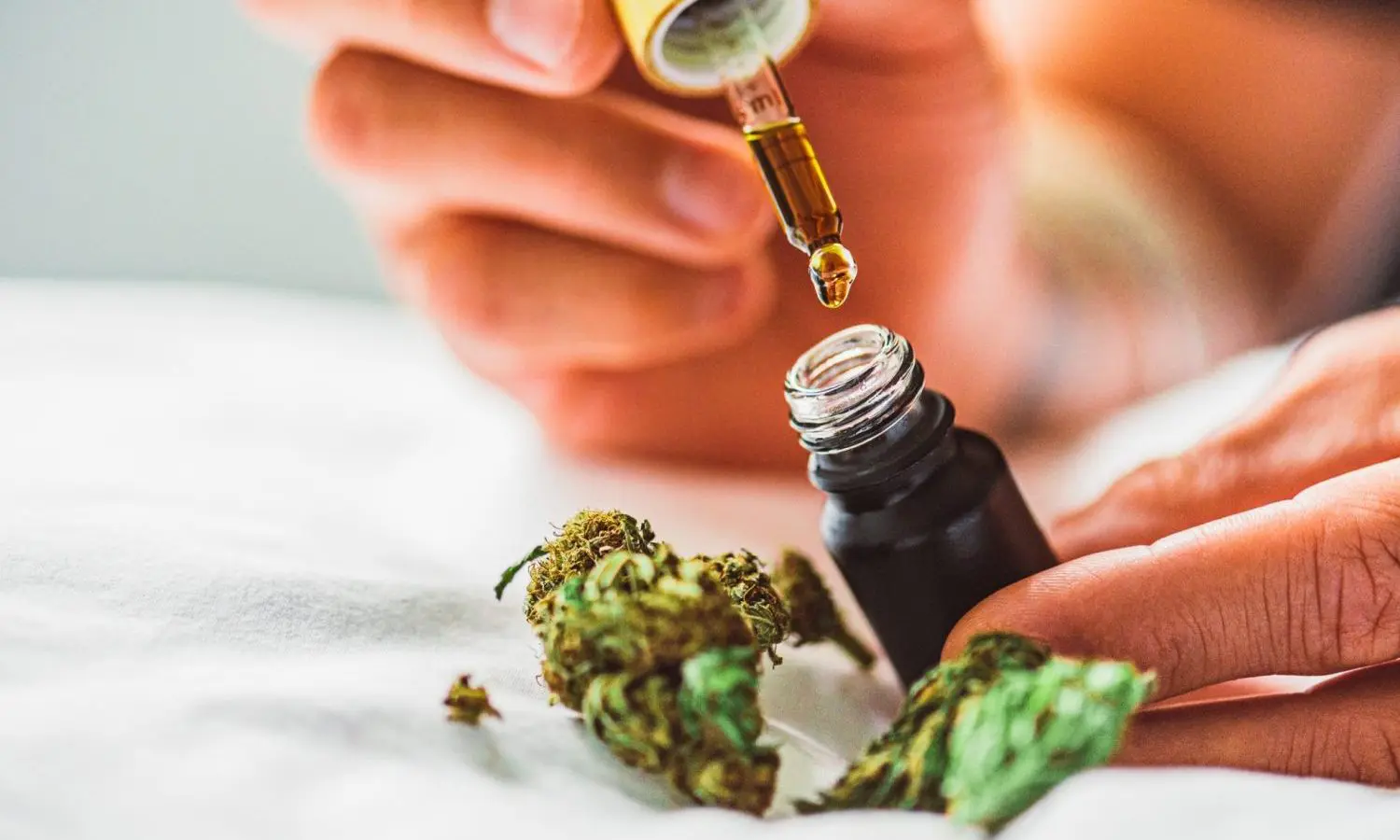
Cannabis enthusiasts often discuss THC (tetrahydrocannabinol), the well-known compound responsible for the psychoactive effects of cannabis. THC is the primary reason behind the plant’s ability to alter mood, perception, and cognition, making it popular for both recreational and medicinal use. However, there’s a new player in town: THC-X.
This newer compound has been generating a lot of buzz due to its potentially unique properties and benefits. So, what’s the actual difference between THC and THC-X?
The Basics of THC
THC, or delta-9-tetrahydrocannabinol, is the primary psychoactive component of cannabis. It binds to cannabinoid receptors in the brain, producing the “high” associated with marijuana. THC is well-known for its ability to alter mood, perception, and cognition.
This compound is one of over 100 cannabinoids found in cannabis but is the most prominent in terms of psychoactive effects. THC’s interaction with the brain’s endocannabinoid system is the primary reason behind its mind-altering properties, making it a major point of interest for both recreational and medicinal users.
Effects of THC

- Euphoria ─ THC often induces a sense of euphoria and relaxation. This feeling of euphoria can vary in intensity depending on the strain and amount consumed. Users may feel a significant uplift in mood, often described as a “high,” which can include feelings of happiness and pleasure.
- Increased appetite ─ Commonly known as “the munchies,” THC can stimulate appetite. This effect is beneficial for patients undergoing treatments like chemotherapy, which often reduces appetite. The stimulation of appetite by THC has also led to its use in treating eating disorders and severe weight loss conditions.
- Altered perception ─ THC can change the way you perceive time and space. This alteration in perception can lead to heightened sensory experiences, making colors appear more vibrant and sounds more pronounced. However, it can also cause disorientation and impaired judgment, which is why caution is advised when engaging in activities requiring focus.
Medical Uses
THC has therapeutic benefits, including pain relief, appetite stimulation, and nausea reduction, making it useful for conditions like chronic pain, cancer, and AIDS. Medical cannabis containing THC is often prescribed to help manage symptoms that are otherwise difficult to control with conventional medications.
THC’s analgesic properties make it a valuable option for chronic pain management, while its antiemetic effects help patients cope with nausea and vomiting, especially during cancer treatments.
What is THC-X?

THC-X is a newer cannabinoid that has been isolated and synthesized for its potential unique properties. Unlike traditional THC, THC-X may offer different effects and benefits.
Researchers believe that THC-X could provide more targeted therapeutic effects with potentially fewer side effects. This novel compound is still under study, but its early promise suggests it could become a significant player in both the recreational and medicinal cannabis markets.
Effects of THC-X
- Enhanced psychoactivity ─ Some users report that THC-X provides a more intense high compared to regular THC. This enhanced psychoactivity may lead to a quicker onset of effects and a more profound experience, appealing to seasoned cannabis users looking for a new level of sensation.
- Potential therapeutic benefits ─ Early studies suggest that THC-X could have stronger pain-relieving and anti-inflammatory properties. These enhanced therapeutic effects make THC-X a promising candidate for treating conditions that involve significant pain and inflammation, potentially offering relief where other treatments have failed.
How is THC-X Made?
THC-X is typically produced through advanced extraction and synthesis techniques. It involves isolating specific compounds from the cannabis plant and then chemically modifying them to create THC-X.
This process requires sophisticated technology and expertise, ensuring that the final product is pure and free from unwanted byproducts. The synthesis of THC-X represents a significant advancement in cannabinoid science, opening new avenues for research and application.
Comparing THC and THC-X

Understanding the differences between THC and THC-X is crucial for consumers and medical professionals alike, as these compounds offer unique effects, potencies, and potential benefits.
Potency
THC-X is often described as more potent than THC. Users might experience a stronger high with smaller doses of THC-X compared to THC. This increased potency means that consumers need to be mindful of their dosages to avoid unwanted intense effects. For medicinal users, this could translate to needing less of the compound to achieve the desired therapeutic benefits, potentially reducing costs and side effects.
Medical Applications
Both THC and THC-X have potential medical uses, but THC-X might offer enhanced benefits due to its potency. Researchers are exploring its use in pain management, inflammation, and possibly other conditions that respond to cannabinoids.
The unique properties of THC-X could make it particularly effective in scenarios where traditional THC falls short, providing new hope for patients with challenging medical conditions.
Legal Status

The legal status of THC and THC-X can vary. While THC is widely recognized and regulated, THC-X is newer and may fall into legal gray areas depending on the jurisdiction.
As a result, consumers and medical professionals need to stay informed about the legal landscape to ensure compliance and safe use. The evolving status of THC-X highlights the ongoing changes in cannabis legislation and the need for updated regulatory frameworks.
Consumption Methods
Cannabis can be consumed in various ways, and both THC and THC-X offer different methods to suit individual preferences and needs.
THC
- Smoking ─ The most common method, involving the inhalation of cannabis smoke. Smoking provides quick onset of effects but can have adverse impacts on lung health.
- Edibles ─ THC-infused foods and beverages provide a longer-lasting effect. Edibles take longer to kick in but offer a prolonged experience, making them suitable for sustained symptom relief.
- Tinctures and oils ─ These are absorbed sublingually (under the tongue) for faster effects. Tinctures and oils offer a discrete and controlled way to consume THC, with the ability to fine-tune the dosage easily.
THC-X
- Vaping ─ THC-X can be vaporized, offering a quick onset of effects. Vaping is considered less harmful than smoking and provides a convenient way to experience THC-X.
- Capsules ─ Provide precise dosing and convenience. Capsules are ideal for those who require consistent dosing without the taste or preparation associated with other methods.
- Topicals ─ Applied to the skin, they may offer localized relief without psychoactive effects. Topicals are useful for targeting specific areas of pain or inflammation without the systemic effects of other consumption methods.
Safety and Side Effects

Common side effects of THC include dry mouth, red eyes, increased heart rate, and impaired memory. High doses can cause anxiety or paranoia in some users. These side effects highlight the importance of responsible consumption and starting with lower doses to gauge individual tolerance.
Due to its potency, THC-X may have more pronounced side effects. Users should start with low doses to gauge their tolerance. Potential side effects could include stronger versions of THC’s side effects, such as heightened anxiety or more significant impairment. As with THC, understanding one’s limits and consuming responsibly is key to a positive experience with THC-X.
Conclusion
THC and THC-X offer different experiences and potential benefits. While THC is well-established and widely used, THC-X represents an exciting development in the world of cannabinoids.
Its increased potency and potential therapeutic benefits make it a compound to watch. As with any substance, understanding the effects, proper dosage, and legal status is crucial for safe and effective use.













